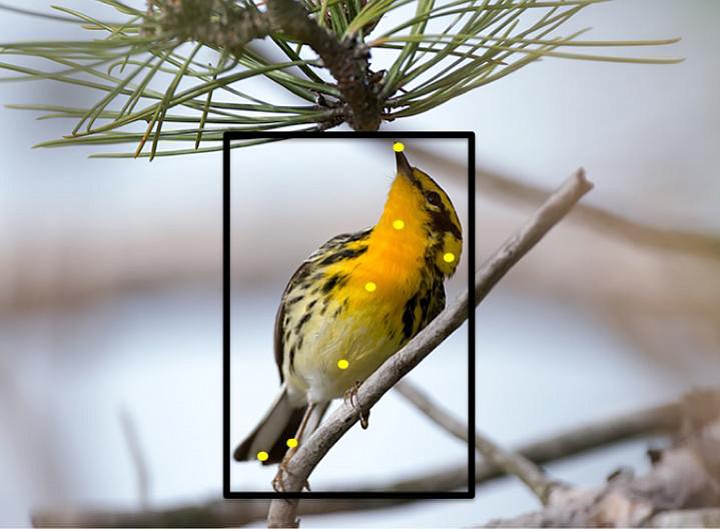There’s a big world out there and it’s full of birds. But figuring out the names of those birds can be intimidating and difficult work for the novice among us.
Enter Merlin Bird ID, a program that lets you upload your bird pictures and then uses computer-vision technology to present possible species. It’s sort of like Shazam, but for birds. The mobile app asks the user questions about the bird to generate a list of possible species, even accompanied by bird calls.
Researchers from Cornell Tech and the California Institute of Technology teamed up with the Cornell Lab of Ornithology to develop the bird identifier, which they presented at the Computer Vision and Pattern Recognition Conference on Monday. Jessie Barry of the ornithology lab said the tool is “a pretty big deal” in the world of birding.
“Ten years ago, people were thinking, ‘Can you imagine if binoculars could take pictures and identify birds?'” Barry said. “And the fact that we can actually snap an image and have the computer say what it is, that’s something you only would have dreamed of.”
Merlin Bird ID is an outgrowth of the Visipedia research project, which engineers started about five years ago as a sort of “visual Wikipedia.” The program can identify 400 of the most common North American bird species, and there are plans to expand the database to include other geographic regions and more birds.
Serge Belongie, a computer science professor at Cornell Tech, said this kind of technology “is very loosely modeled on human perception — the way the eye and retina and human visual processing works.”
The engineers tapped into a vast network of people associated with the ornithology lab, who volunteered to help develop and constantly refine the data set. Merlin also utilizes bird-sighting information from eBird.org.
“We’re not aspiring to remove the human element and experts from the loop,” Belongie said. “What we want to do is use their time much more efficiently.”
Barry, who began birding as a 10-year-old, said many may give up on bird watching prematurely because identifying species can be so difficult at first.
“For most people, identifying birds involved picking up a field guide … and you’re left to kind of your own devices to sort out what might be a good match.” Merlin, she added, makes birding much more accessible.
As a non-expert of birds, I wanted to try this out myself. There aren’t many feathered friends around my downtown Washington office that I can’t identify (read: non-pigeons), so I turned to Twitter and searched for BirdWatching.
I saved and uploaded a photo to Merlin’s Bird ID. The program asked when and where the photo was taken. I selected “I don’t know,” but having this information tends to make the identification much easier, since the choices get narrowed down.
Merlin then had me point out the location of the bird’s eyes, bill tip and tail.
According to this photographer, the bird is an Indigo Bunting.
What did Merlin have to say?
Clicking “This is my bird” sends the image and information into a folder on the cloud, which volunteers look over to confirm the bird is, indeed, an indigo bunting.
“We believe that birds are oftentimes people’s first and fundamental connection to the natural world,” Barry said. “If you look out and can say, ‘Hey, that’s an American robin and it’s coming to nest in my backyard,’ and you start to learn more about its life history, you’re going to be more inspired to help protect its habitat.”



